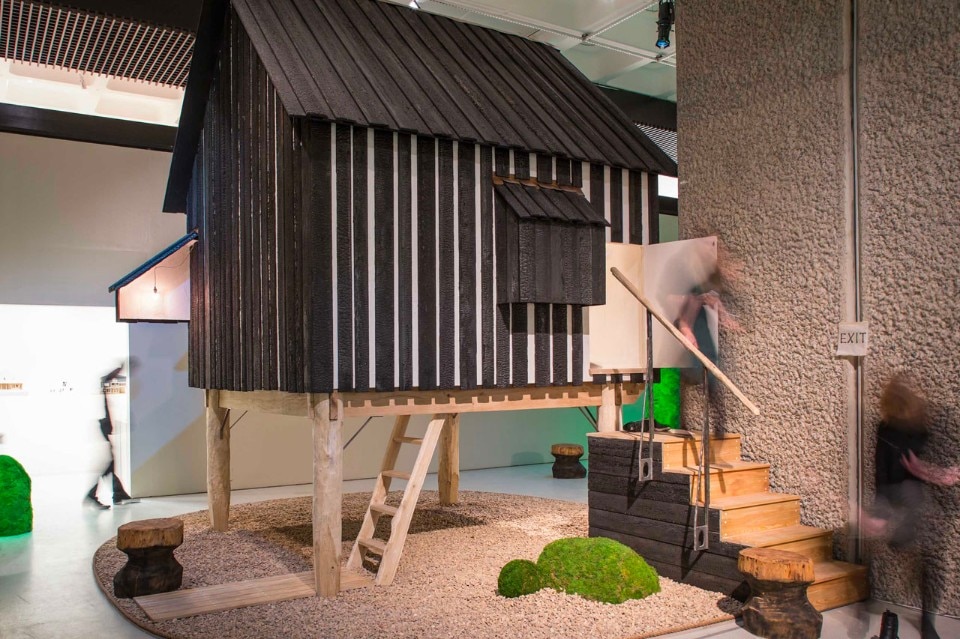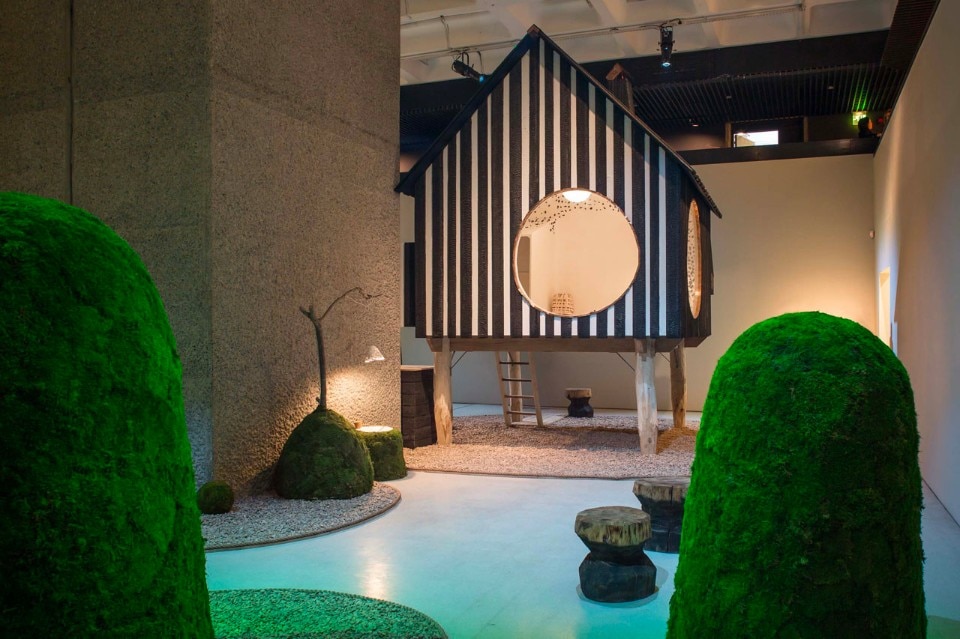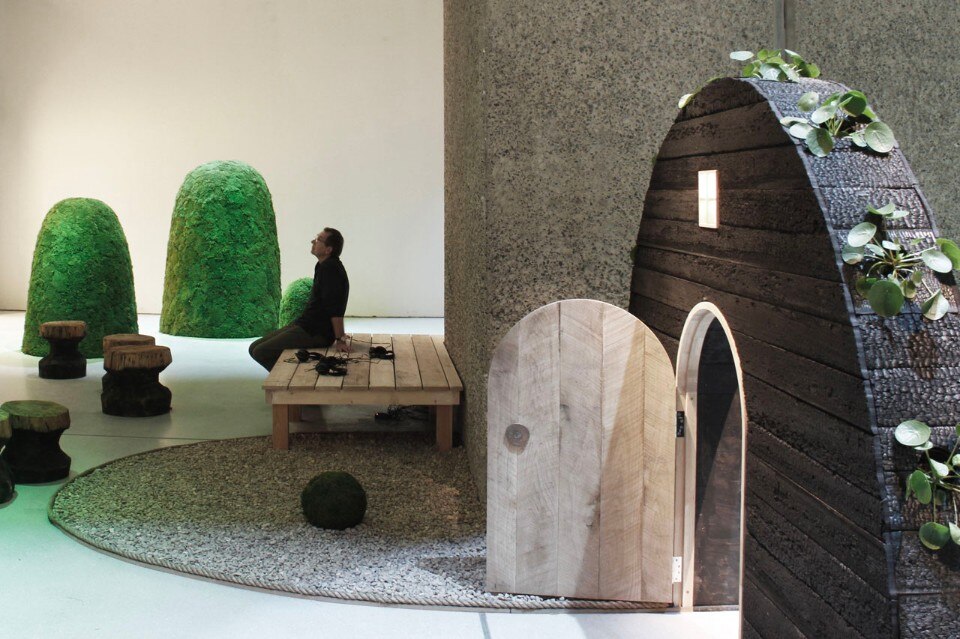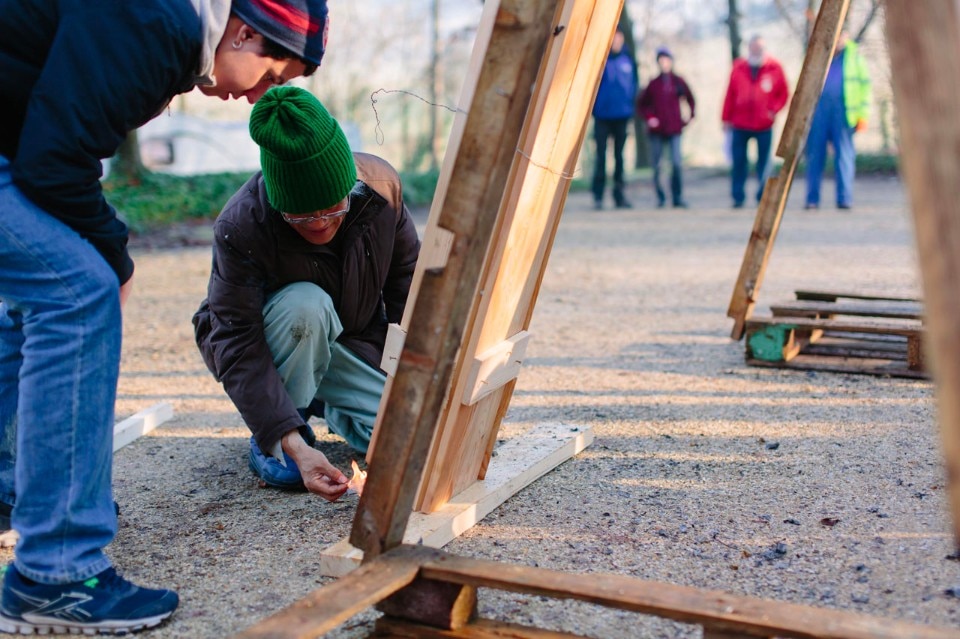Fujimori assests that buildings can be made by non-professional people and the teahouse follows this principle. It was constructed by the hands of students and tutors from Kingston University, under the guidance of the London based Japanese architect Takeshi Hayatsu. The exterior cladding utilises Yakisugi, charred timber produced using the traditional Japanese charring technique. The charring workshop was held at the Weald and Downland living museum in West Sussex in January 2017. The structure was prefabricated at the University’s workshop. The bronze cast handles, ceramic lampshades, hearth, vase and plywood stools were also handmade by students from Kingston’s architecture, product and furniture design courses.
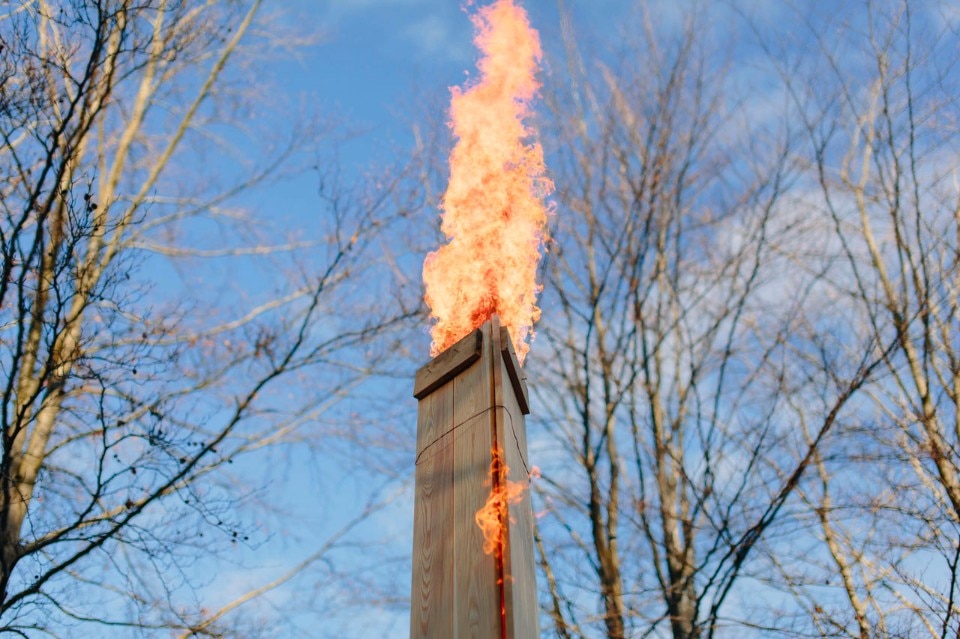
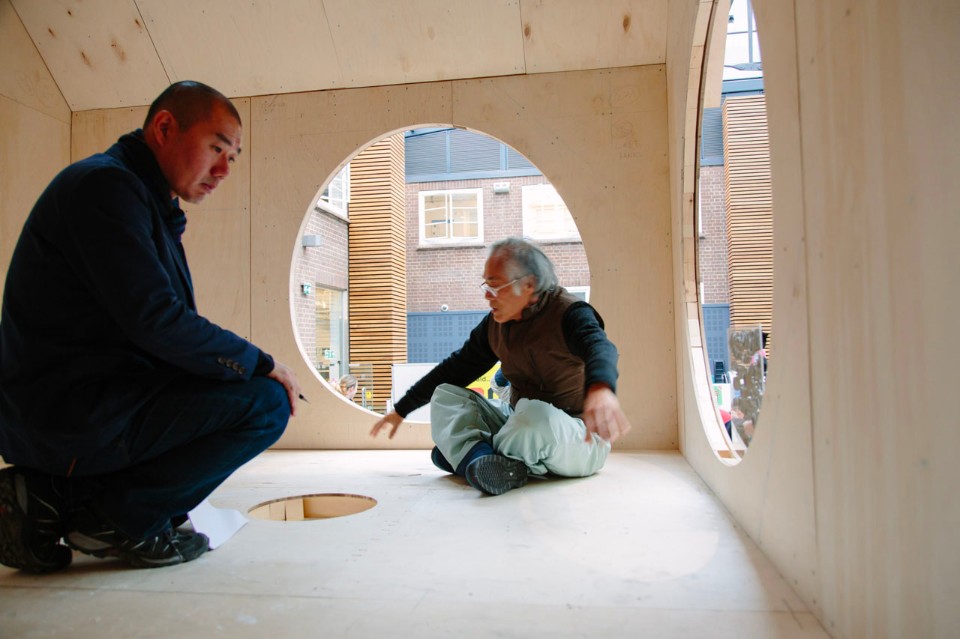
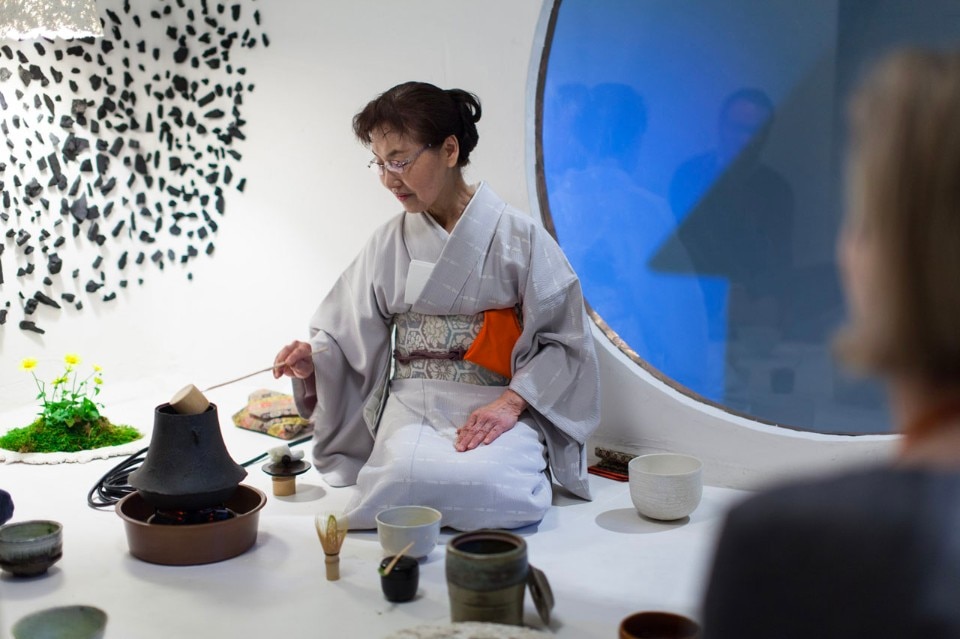
until 25 June 2017
Tea House
Designed and built by Terunobu Fujimori and Takeshi Hayatsu
The Japanese House: Architecture and Life after 1945
Barbican Centre
Silk Street, London

